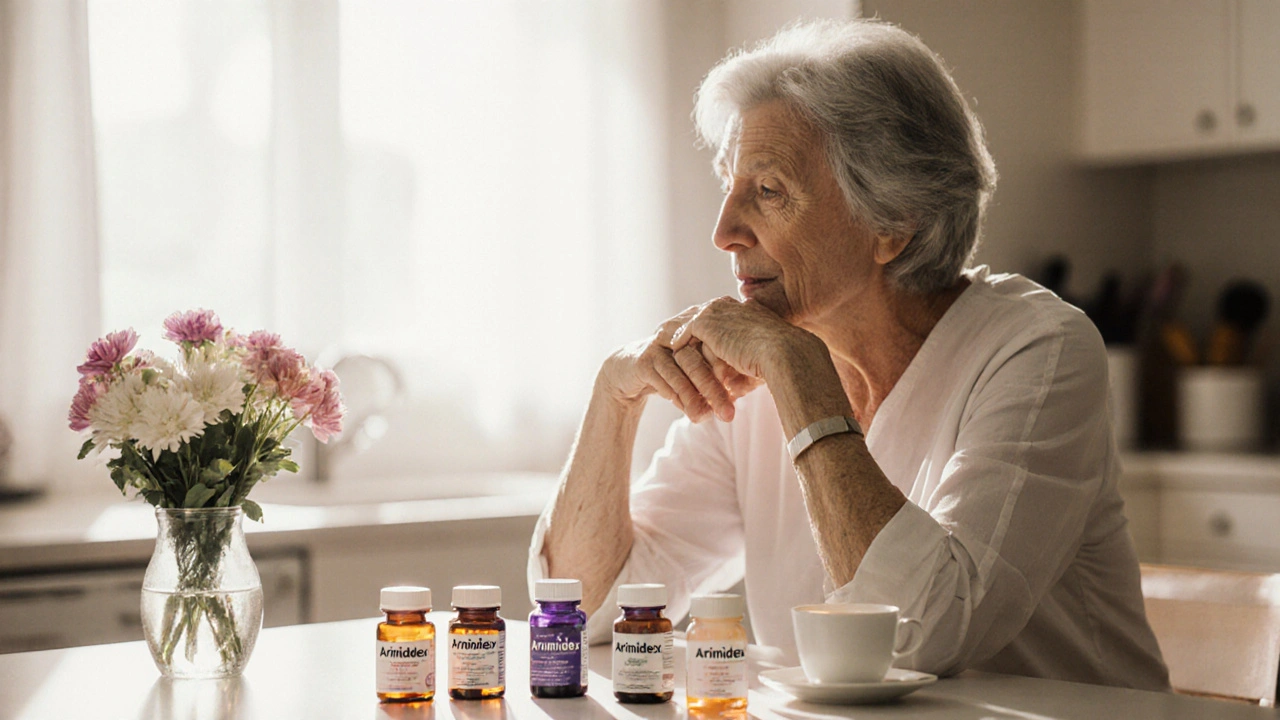Breast Cancer Treatment: What You Need to Know
Did you know that more than 80% of women diagnosed with early‑stage breast cancer survive beyond five years? That success comes from a mix of surgery, drugs, and radiation that are tailored to each case. Below you’ll find a quick rundown of the main options, what to expect, and how to deal with the side‑effects that often follow.
Main Treatment Options
Surgery is usually the first step. Whether it’s a lumpectomy (removing just the tumor) or a mastectomy (removing the whole breast), the goal is to get every cancer cell out. Your surgeon will discuss margins, lymph‑node checks, and any reconstructive choices you might want.
Radiation therapy often follows surgery, especially after a lumpectomy. It uses high‑energy beams to kill any leftover cells in the breast or nearby tissue. Treatment is usually given five days a week for three to six weeks, and most people feel only mild skin irritation.
Chemotherapy uses powerful drugs to target cancer cells that may have spread beyond the breast. It can be given before surgery (neoadjuvant) to shrink a tumor, or after surgery (adjuvant) to reduce recurrence risk. Common regimens include AC (doxorubicin + cyclophosphamide) followed by paclitaxel. You’ll likely have infusions every two or three weeks for several months.
Hormone (endocrine) therapy is key for cancers that have estrogen or progesterone receptors. Medications like tamoxifen or aromatase inhibitors block the hormone’s ability to fuel cancer growth. This treatment can last five to ten years, and many patients take a pill daily.
Targeted therapy attacks specific proteins or genes that the tumor relies on. HER2‑positive cancers often get drugs like trastuzumab (Herceptin) or pertuzumab, which bind to the HER2 protein and stop it from signaling. These agents are usually combined with chemo and given intravenously.
Immunotherapy is emerging for certain triple‑negative breast cancers. Checkpoint inhibitors such as pembrolizumab help the immune system recognize and destroy cancer cells. They’re still being studied, but early results look promising.
Managing Side Effects
Every treatment comes with its own set of side‑effects, and knowing how to handle them can make the journey smoother. For surgery, keep the incision clean, follow your doctor’s wound‑care tips, and move gently to avoid stiffness. Physical therapy can help restore range of motion, especially after a mastectomy.
Chemotherapy often brings nausea, fatigue, and hair loss. Anti‑nausea meds taken before each infusion can cut the queasy feeling in half. Small, frequent meals and staying hydrated also help. Fatigue is best tackled by pacing yourself—short walks, naps, and light chores beat pushing through all‑day exhaustion.
Hormone therapy can cause hot flashes, joint pain, and mood swings. Dressing in layers, using a fan, and exercising regularly can ease hot flashes. Over‑the‑counter NSAIDs or a warm‑compress pack may relieve joint aches. If mood changes become severe, talk to your provider; they might adjust the dose or suggest counseling.
Targeted therapies sometimes affect the heart or cause skin rashes. Regular heart‑function tests (e.g., echo) catch issues early, and a simple moisturizer can soothe mild rashes. Never skip a scheduled appointment—early detection keeps treatment on track.
Immunotherapy side‑effects range from mild skin itching to more serious inflammation of organs. Report any new symptoms, like shortness of breath or severe diarrhea, right away. Prompt treatment with steroids or other meds can stop serious problems before they worsen.
Beyond medical tricks, a solid support system makes a huge difference. Join a local breast‑cancer group, talk openly with friends and family, and keep a journal of symptoms and feelings. Knowing what’s normal and when to call your oncology team reduces anxiety and improves outcomes.
Bottom line: breast cancer treatment isn’t one‑size‑fits‑all. It blends surgery, radiation, drugs, and sometimes newer immunotherapies to match the tumor’s biology. Understanding each option, anticipating side‑effects, and having a plan to manage them puts you in the driver’s seat of your care journey.

- Oct, 13 2025
- Comments 19
Arimidex (Anastrozole) vs. Other Aromatase Inhibitors: Which One Fits Your Breast Cancer Treatment?

- Sep, 21 2025
- Comments 12